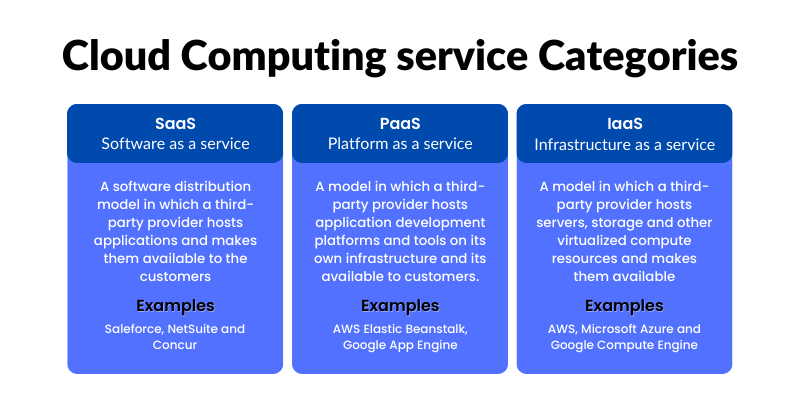What is PaaS? Platform as a service
Platform-as-a-Service, or PaaS, offers a full, adaptable, and affordable cloud platform for creating, deploying, and managing applications.

What is PaaS? Platform as a service definition
Platform as a Service (PaaS) is a cloud computing concept in which consumers receive hardware and software resources via the internet from a third-party supplier. These tools are typically required for the creation of applications. The hardware and software are hosted on the infrastructure of a PaaS provider.
PaaS relieves developers of the burden of setting up proprietary hardware and software to create or run new applications. PaaS technologies are frequently praised for being user-friendly and practical. When compared to on-premises alternatives, a company may find the switch to PaaS to be cost-effective.
How does PaaS function?
As was already said, PaaS does not entirely take the role of an organization’s IT infrastructure for software development. It is offered through the hosted infrastructure of a cloud service provider.
Users use web browsers to access the services most frequently. PaaS can be used to supply services like Java development and application hosting through public, private, and hybrid clouds.
Other PaaS services include the following:
- development team collaboration;
- application design and development;
- application testing and deployment;
- web service integration;
- information security; and
- database integration
Pros of Platform as a service
When compared to an on-premises platform, the following advantages of PaaS are most frequently mentioned:
Simple, affordable scalability: Scaling on an on-premises platform is always costly, frequently wasteful, and occasionally insufficient: In advance of periods of high traffic, you must purchase more computing, storage, and networking capacity because none of them can be expanded quickly enough to handle sudden increases in demand. When you need more capacity, you can acquire more PaaS capacity and use it right away.
Access to a wider range of resources at a lower cost: PaaS platforms typically provide access to a broader range of application stack options, such as operating systems, middleware, databases, and development tools, than most organisations can practically or affordably maintain themselves.
Lower overall costs: Clearly, PaaS saves money by allowing a company to avoid the capital equipment costs associated with building and scaling an application platform. However, Platform as a service can help to reduce or eliminate software licensing costs. PaaS can also lower your overall application management costs by handling patches, updates, and other administrative tasks.
How does PaaS work?
What are the differences between PaaS, IaaS and SaaS?

PaaS is one of the three major types of cloud computing services. Infrastructure as a service (IaaS) and software as a service (SaaS) are the other two major cloud computing categories:
With IaaS, a provider supplies the basic compute, storage and networking infrastructure along with the hypervisor — the virtualization layer. Users must then create virtual instances such as VMs and containers, install operating systems, support applications and data, and handle all of the associated configuration and management. IaaS services include DigitalOcean, AWS, Azure, and Google Compute Engine.
PaaS providers provide more of the application stack than IaaS providers, including operating systems, middleware (such as databases), and other runtimes in the cloud environment. AWS Elastic Beanstalk and Google App Engine are two Platform as a service products.
A SaaS provider provides an entire application stack. Users simply log in and use the application, which is entirely hosted by the provider’s infrastructure. SaaS applications are typically fully accessible via an internet web browser. The application workload and all underlying IT resources are managed by SaaS providers; users only have access to the data generated by the SaaS application. Salesforce, Dropbox, and Google Workspace are examples of SaaS.
Case Studies for PaaS
Migration to the cloud and cloud-native development: PaaS, with its ready-to-use tools and integration capabilities, can make it easier to migrate existing applications to the cloud, particularly through replatforming.
API development and management: Platform as a service makes it much easier for teams to develop, run, manage, and secure APIs (application programming interfaces) for sharing data and functionality between applications due to its built-in frameworks.
Hybrid cloud strategy: Hybrid cloud combines public cloud, private cloud, and on-premises infrastructure to provide orchestration, management, and application portability across all three. As a result, an organisation can run and scale traditional (legacy) or cloud-native workloads on the most appropriate computing model in a unified and flexible distributed computing environment. The right PaaS solution enables developers to build once and then deploy and manage their applications anywhere in a hybrid cloud environment.
Future of the PaaS market and business model
PaaS has emerged as a cost-effective and capable cloud platform for developing, running, and managing applications, with the PaaS market expected to grow through 2027. For example, IDC forecasted a compound annual growth rate of 28.8 percent in the cloud and Platform as a service market from 2021 to 2025.
Such expectations are based on the need for businesses to reduce complexity, shed local infrastructure, foster collaboration (particularly among remote and geographically dispersed teams), and streamline application management tasks.
Related blog what will help you know What is Cloud Directory
Follow up for latest update at f60 host



